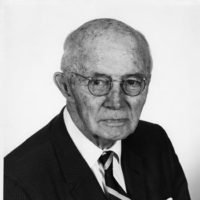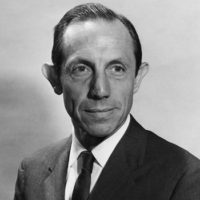
William B. Kouwenhoven
Johns Hopkins University

Paul M. Zoll
Harvard Medical School; Beth Israel Hospital
For the development of open and closed chest defibrillators, and for originating the technique of external cardiac massage.
William Kouwenhoven
Dr. William Kouwenhoven has made three landmark contributions to the care of cardiac patients: first, in 1933, he and his colleagues confirmed the basic fact that an electric shock could reverse ventricular fibrillation of the heart; second, he developed the devices for both open- and closed-chest defibrillation; and third, he originated the technique of external cardiac massage.
These might well be the contributions of an ordinary man's lifetime, but extraordinarily, Dr. Kouwenhoven developed the closed-chest defibrillator and external cardiac massage—some of his most significant contributions—after he was 68 years of age, and after he had retired in 1954 from a distinguished career in electrical engineering.
His interest in cardiovascular physiology began in 1928, when he concentrated his experimental studies on the effects of electric current on the heart. In 1933, he and his colleagues confirmed the principle that an electric shock could restore a fibrillating heart to normal beating.
Continued investigative work culminated in 1958 with the perfection of a closed-chest defibrillator—developed independently, but at the same time as Dr. Zoll's contribution in this respect.
However, a serious problem of sustaining circulation until the patient could be brought to defibrillation remained to be solved.
In 1958, Dr. Kouwenhoven devised the simple technique of external chest massage which makes it possible to sustain by hand the circulation through the body long enough to get the patient to a defibrillator.
This external cardiac massage requires no instruments and has revolutionized the care of patients sustaining cardiac arrest from many causes, and especially, those resulting from acute myocardial infarction. This technique, so simple that anyone who cares to can learn it, and so effective that ambulance drivers, fireman and policeman the world over are trained to use it, initiates cardiac resuscitation wherever the cardiac crisis occurs, and has saved the lives of thousands of heart attack victims.
We salute you, Dr. Kouwenhoven, for your ageless genius, and, for these contributions, present to you the 1973 Albert Lasker Clinical Research Award.
For the development of the closed-chest defibrillator and the pacemaker.
Paul Zoll
There are two kinds of cardiac rhythm disturbances in patients who have cardiac arrest: the rhythm disturbance of a heart in standstill, and the rhythm disturbance of a "fibrillating heart," which are the commonest causes of death in acute heart attacks. The effective electrical techniques that now help to control these disturbances are the pioneering contributions of Dr. Paul Zoll.
Dr. Zoll demonstrated for the first time in 1952 that when a human heart stops, it can be induced, by externally applied electric stimulation, to resume beating.
Dr. Zoll's later studies showed that externally applied, alternating current counter shocks are similarly effective in stopping ventricular fibrillation, and also in correcting a number of other serious, potentially lethal, abnormalities of rhythm.
In addition, Dr. Zoll developed the theory and technique of continuous cardiac monitoring of heart rhythm, and was the first to apply this method clinically. The Coronary Care Unit now found in every well-equipped hospital is a further development of this life-saving concept.
Pacemakers, which have saved thousands of people from sudden and unpredictable death, are Dr. Zoll's invention. One measure of the good that pacemakers have done, and the need there is for them, is the fact that more than 60,000 Americans have received pacemakers, and an estimated 12,000 to 15,000 new pacemakers are implanted annually.
For Dr. Zoll's many and brilliant contributions in this vital area of cardiac care, this 1973 Albert Lasker Clinical Research Award is given.
